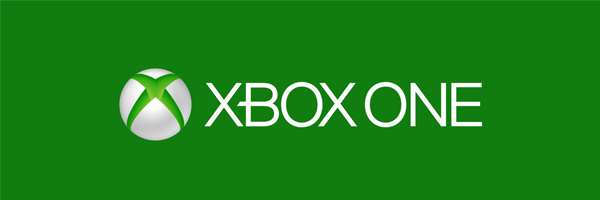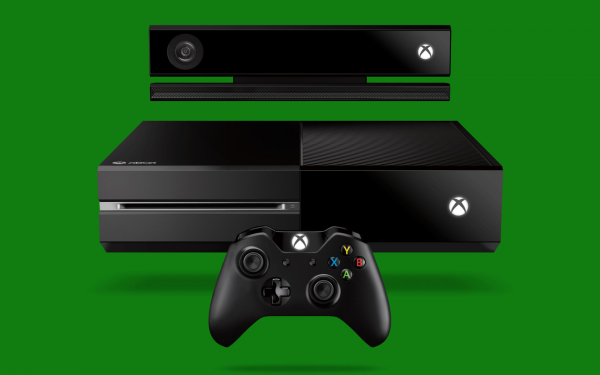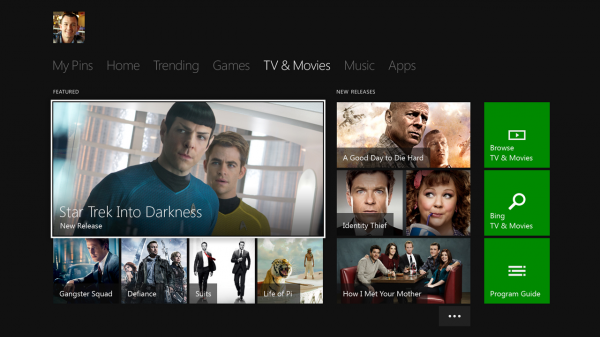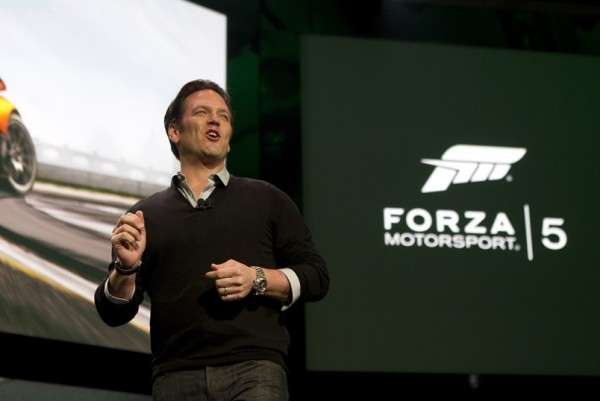
What We Know About the Xbox One Before E3
After watching Microsoft’s Xbox One reveal, we’ve tried to compile a list of all the known specifications for the new system. This list isn’t complete, but it represents all the information we’ve been able to gather from the conference and post-interviews.
System:
The bulky console uses an x64 8-core CPU, contains 8GB of DDR3 RAM and comes with a standard 500GB hard drive for local storage. It was said that the Xbox One includes 5 billion transistors, which is a huge improvement when compared to the Xbox 360’s 3 million. Extra transistors allow for more operations to be executed simultaneously, which in turn makes way for much more intelligent software to be used. The console runs three separate operating systems – the Windows kernal, the Xbox system and a connector OS that allows the other 2 systems to work together. Although this creates a nice separation between the two and allows for extremely fast switching between different applications (which was demonstrated live), using three operating systems will no doubt occupy a good portion of the system’s RAM. A nice but small improvement is the promise of almost silent running, which may be a relief to PS3 users, as I know my system often sounds like a lawnmower trying to start.
The most disappointing and controversial aspect of the system is the heavy use of the cloud. The console needs to go online at least once every 24 hours or functionality will cease, which makes sense because of their cloud strategy but is overall a huge mistake. Stopping people from using the device because they can’t connect to the internet is an incredibly touchy subject as many people still have connection issues or no internet at all, rendering the console useless to them.

Another heated subject is how the system will run games, which will still be sold on disks but will merely contain installation files that will rip the game to the hard drive before it can be played. This process is mandatory and allows Microsoft to monetise secondary installs from disks, potentially giving them the ability to charge users to play a second-hand game after they’ve already purchased it. Second-hand games are the biggest income for many chains, and this price increase will likely drive away a good chunk of the market. As the console uses a Blu-Ray player, which allows for disks to contain up to 50GB of data, mandatory game installation could possibly limit a user to just 10 games on their system at a time, forcing them to wait through a full re-install before they can jump back into an old game, which is never fun.
Controller:
Little was said about the new controller at the conference, but since then we’ve learnt a little more about them. Firstly, the D-Pad has been improved to be more accurate and now closely resembles the D-Pad on Nintendo controllers, which are often praised. The buttons ‘Start’ and ‘Back’ buttons have been replaced with ‘Menu’ and ‘View,’ and although very little had been said about them, they are likely to continue the same functionality. As well as the original vibration motors in the grips, smaller motors have been fitted into the triggers allowing for smaller and more sensitive rumbles. According to many testers, they are quite effective when used well, pulling players deeper into the game world. Personally, I could see a use for this type of intimate vibration in games such as Alan Wake that really engage the player. The battery pack is now flush with the back of the controller to make it more comfortable to hold, and the handles and analog sticks have slight improvements for enhanced grip and seem to have been built with long gameplay sessions in mind.

Kinect:
The Kinect will now come standard with the console and is required to always be on for the Xbox to function, which is fairly eerie to say the least. Microsoft have been pushing Kinect voice and gesture commands for several years now and they don’t look to be slowing down any time soon. Using voice commands to call people on Skype, search the web with Bing, and even turn the Xbox on or off is constantly being flaunted as a huge benefit of the Kinect, but it seems that gamers simply don’t use it to its full potential, which is what Microsoft hope to change with the Xbox One.
The Kinect 2 is a vast improvement over the original Kinect, using infrared so it works in the dark and tracks movement at the speed of light from the Kinect and back. The camera runs at 60FPS and records in 1080p, allowing for great video recording if you ever want to see just how stupid you look flailing around to Star Wars Kinect.
Unfortunately with the heavily cloud-based system and the always-on Kinect, many gamers can’t see past just how the Kinect might be used by Microsoft – especially after witnessing some of the incredible homemade software that has been developed over the past few years. Using the camera to watch users, gather data and advertise accurately towards them are just some of the ways the Xbox One can be used to intrude. Using the voice command ‘Xbox One on’ to power-up the system means the Kinect must always be on even when the system isn’t, constantly listening and sending data back and forth from Microsoft servers. Now we know why they’ve invested in 300,000 servers for the Xbox One when the Xbox 360 only used 15,000…

TV:
The conference greatly focused on how the Xbox One will work with TV, and it was revealed that the console will come with its own TV guide system that works hand-in-hand with Kinect voice gestures. Personally, I haven’t watched TV in years and turn to streaming services or simply purchase DVDs to watch anything – and I see this trend growing. TV seems to be on its way out, as more people want to watch what they want and when they want instead of sticking to a pre-set schedule. Microsoft seem a little behind in the times here, especially since an extra fee may be necessary to watch TV through the Xbox One when TV watchers are likely to already have TV systems set-up. It was demonstrated how easy and fast it is to flit between gaming, watching TV or browsing the web, but the obvious question here is ‘Why?’ Why would anyone be watching TV with a game running in the background or vice versa?
Windows (Menu):
The new user interface is based on the Windows OS, following a Windows 8 metro layout that will be familiar to current Xbox 360 users. It will also include all of the new additions such as Skype, TV and several other applications we are likely to see at E3, shifting gaming away from its central focus that the Xbox 360’s menus show. The ‘snap’ ability allows users to multitask in the same window by taking up a third of the screen to browse the web, use Skype or navigate a number of other activities. Using the Kinect to call a friend over Skype whilst in-game seems pretty useful, but browsing the web whilst gaming or watching a film seems like it would just waste precious screen space that could be saved by simply using a smartphone or other device that users are likely to have with them anyway.

Games:
There was only a single teaser shown for an Xbox One IP, but they did promise they are saving most of the game-related news until E3, where they will reveal 15 games (including 8 IPs). The game that was teased, Quantum Break, showed a live-action trailer of a what seemed to be a small girl with supernatural powers causing a ship to crash into a bridge. It was all very strange and instantly reminded us of Defiance, the TV series/video game crossbreed that Quantum Break may be following.
A multitude of EA sports games were shown, but as these aren’t Xbox One exclusives, there was very little to get excited about. Although, it was announced that the popular ‘Ultimate Team’ mode on Fifa 14 would be an Xbox exclusive, but this was later refined, revealing that only parts of the game mode would be exclusive, further diminishing the usefulness of teasing these games.
A lot was shown about the upcoming Call of Duty: Ghosts game, revealing enhanced AI, fluid dynamics, lighting and the inclusion of allied dogs. Once again this was something that didn’t need to be at the conference as the game isn’t Xbox One exclusive and will be released on the PS4, with the only benefit being that Xbox One players will get all DLC content early.
Forza 5 was also teased, showing no in-game footage.

Miscellaneous:
A surprising announcement unveiled that Steven Spielberg is working on a Halo TV series, which has great potential that we just can’t wait to see. There’s a huge amount of fan-made Halo videos on the web and some of them are pretty fun to watch. Hopefully this will be no different and will keep as close as it can to Halo’s intense storyline.
Rumours:
According to a recent Kotaku article, Microsoft have a patent that will allow them to verify ‘pay-per-user’ content. For example, if you purchase a film, then the Xbox could simply choose not to play it if there is more than the allowed number of viewers in the room (presumably the Kinect would be used to check this). All this would do is drive consumers away from purchasing any content that includes such restrictions, whether it’s purchasing DVDs, torrenting or simply using other means to view it. A big mistake from Microsoft.
Joystiq revealed a rumour that the console will allow remote playing through Skype, much like how the PS4 allows a spectator to take over the game when help is required. Although, this rumour seems rather odd considering how strict Microsoft seem to be taking second-hand gaming, so allowing a friend to play through Skype seems like a loophole.

Overall, the conference seems to have disappointed a lot of people by not focusing on gaming, and the console itself has been shunned for being cloud-based, not trusting users with content sharing and effectively making Big Brother a reality in the living room. Hopefully we will see all of these issues cleared up at E3, as well as an impressive line-up of games that will change everybody’s mind about the Xbox One.